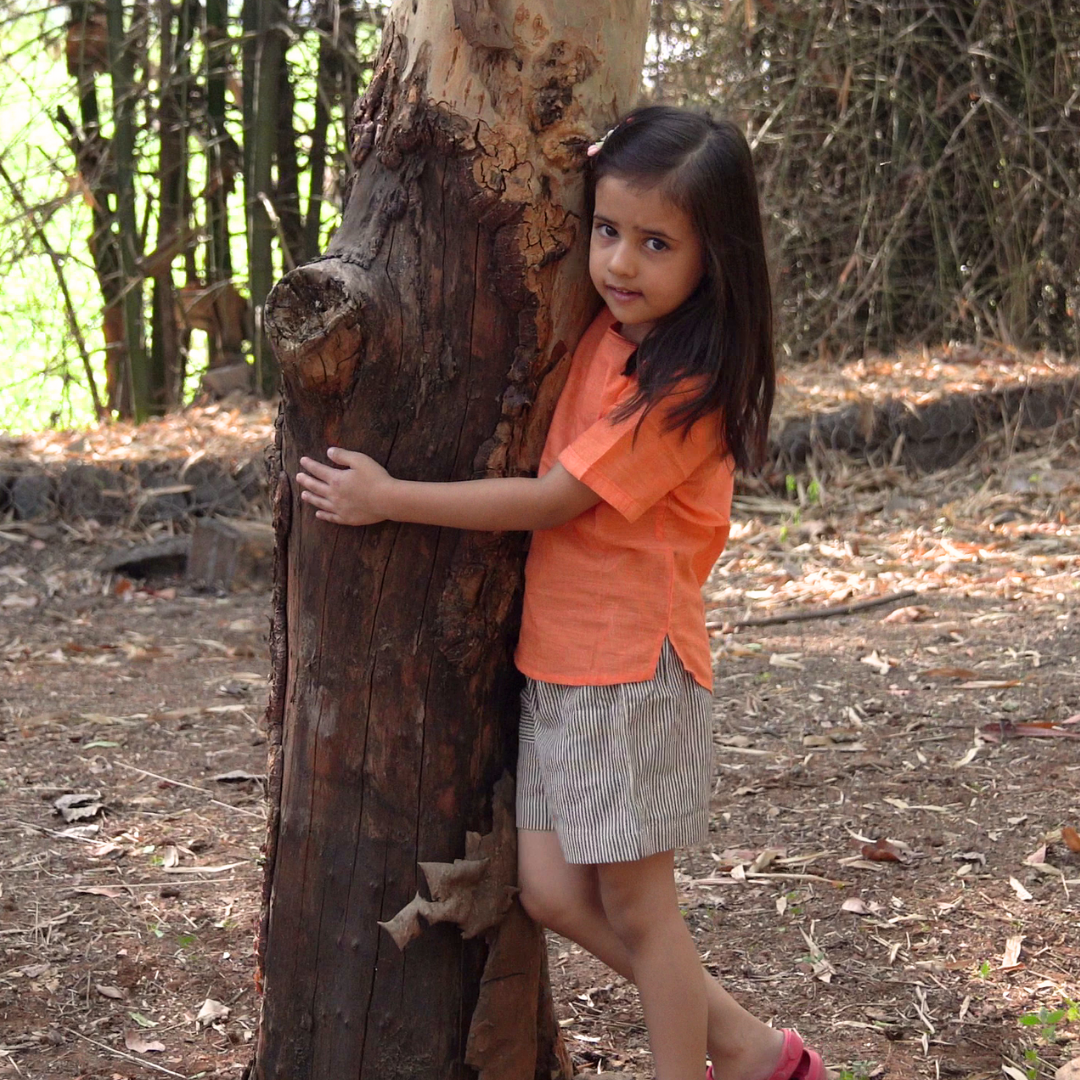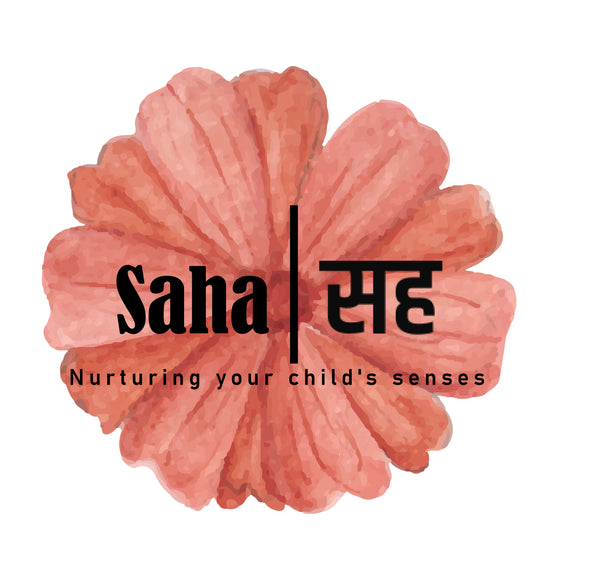
5 Types of Open-ended Play Every Parent should know about
Share
In today’s fast-paced world of screens and structured programs, a quiet parenting revolution is taking place: open-ended play. This style of child-led learning encourages creativity, emotional intelligence, and critical thinking, essential tools for the next generation.
Unlike goal-oriented activities, open-ended play is process-driven, meaning there’s no “right” way to play. For parents focused on conscious, sustainable parenting—a growing movement in India and globally—it’s a game-changer.
Whether you follow a Montessori path, Waldorf influences, or your own mindful parenting approach, here are five types of open-ended play every parent should know—and nurture—at home.
1. Pretend Play (Also called Imaginative or Role Play)
Ever seen your child turn a wooden spoon into a magic wand? That’s the beauty of pretend play. Children step into imaginary worlds, becoming characters and storytellers all on their own.
Key Benefits of Pretend Play
- Boosts empathy, self-regulation, and language development (Berk et al., 2006)
- Encourages understanding of social roles and complex emotions
- Fantastic for sibling or peer interaction
Tips for parents for Pretend type Open-ended play
- Create a dress-up box with scarves, old hats, or capes
- Set up pretend zones: a mini café, doctor’s clinic, or nature store
- Use natural materials—wooden toys, cloth dolls, hand puppets—to invite storytelling
“When children pretend, they learn.” – Fred Rogers
2. Construction Play
Blocks, cardboard boxes, stick forts—construction play lets children build the worlds they imagine. It’s more than fun—it’s foundational to motor and STEM skills.
Key Benefits of Construction Play
- Enhances fine motor development and spatial awareness
- Teaches perseverance, planning, and problem-solving
- Great synergy with Montessori-style learning environments (Whitebread et al., 2012)
Tips for parents for Construction-type Open-ended play
- Offer natural or recyclable materials: wooden blocks, cardboard tubes, string
- Let kids explore outdoor building with sticks, stones, or leaves
- Use magnetic tiles or eco-friendly building sets for indoor play
3. Artistic Play
Open-ended artistic play is all about process, not product. Scribbles, clay blobs, or layered color washes—each creation helps children express themselves while sharpening coordination.
Cognitive and Emotional Benefits of Artistic Play
- Supports emotional regulation and sensory development (Golomb, 2004)
- Builds fine motor skills, bilateral coordination, and visual focus
Tips for parents for artistic-type open-ended play
- Eco-paints, beeswax crayons, play dough, watercolors, textures from nature
- Skip coloring books—instead offer blank pages and different brushes or natural materials
- Celebrate experimentation without correcting or “fixing” their art
4. Nature Play
Nature is, by its very design, the ultimate open-ended playground. From leafy jungles to backyard mud kitchens, it’s where kids develop resilience, independence, and wonder.
Health and Developmental Benefits of Nature Play
- Increases attention span, physical fitness, and mental well-being (Louv, 2008)
- Sparks creativity and instills calm through unstructured time outdoors
Easy Nature Play ideas for parents
- Build a mud kitchen from old pots and pans
- Go on sensory nature walks; collect leaves or flowers for art
- Let children run barefoot in grass or dig in soil—yes, even in India’s smallest balconies or parks
5. Loose Parts Play
This fast-growing concept celebrates imagination through random “stuff.” Think: shells, fabric scraps, buttons, wooden rings, cardboard tubes—even pebbles.
Key benefits of Loose Parts Play
- Boosts divergent thinking and creativity (Nicholson, 1971)
- Promotes self-direction and endless experimentation without instructions
- Encourages reuse and sustainability—core principles shared by many eco-conscious Indian families
Tips for parents to support Loose-parts type Open-ended Play
- Bottle caps, clothespins, corks, pinecones, kitchen tools
- Keep items in an open basket or shelf for easy access
- Let your child lead—observe how they transform “nothing” into magic
Create an Open-ended Play Space at home
Want to create a child-led learning environment at home, inspired by Montessori or Waldorf principles? Here’s what helps:
1.Less is more: Choose fewer toys, more open-ended materials
2.Accessible storage: Baskets & trays within child’s reach
3.Free time: Leave unstructured blocks of time in the day
4.Trust the child: Resist the urge to “teach”—observe and support
Every time your child dives into open-ended play, they’re building real-life skills for problem-solving, emotional growth, and lifelong learning.
Discover our favorite eco-conscious wooden toys and loose-parts sets on our website – thoughtfully curated for mindful families!
Final Thoughts
Open-ended play gives your child freedom to lead, imagine, and be at peace with who they are. It’s the opposite of "doing it right”—and that’s exactly what makes it so powerful.
Through imagining, building, sculpting, and exploring the natural world, your child is growing in ways we can’t always measure—but can deeply feel.
At discoversaha.com, we believe in empowering families through play, purpose, and conscious choices. Open-ended play is where it all begins.
References
- Berk, L. E., Mann, T. D., & Ogan, A. T. (2006). Make-believe play: Wellspring for development of self-regulation.
- In D. G. Singer, R. M. Golinkoff, & K. Hirsh-Pasek (Eds.), Play=Learning (pp. 74–100). Oxford University Press.
- Golomb, C. (2004). The child’s creation of a pictorial world (2nd ed.). Psychology Press.
- Louv, R. (2008). Last child in the woods: Saving our children from nature-deficit disorder. Algonquin Books.
- Nicholson, S. (1971). How not to cheat children: The theory of loose parts. Landscape Architecture, 62(1), 30–34.
- Whitebread, D., Basilio, M., Kuvalja, M., & Verma, M. (2012). The importance of play: Report for Toy Industries of Europe
Want more mindful parenting tips?
Follow us on Instagram @discoversaha for real-life #OpenEndedPlay inspiration
